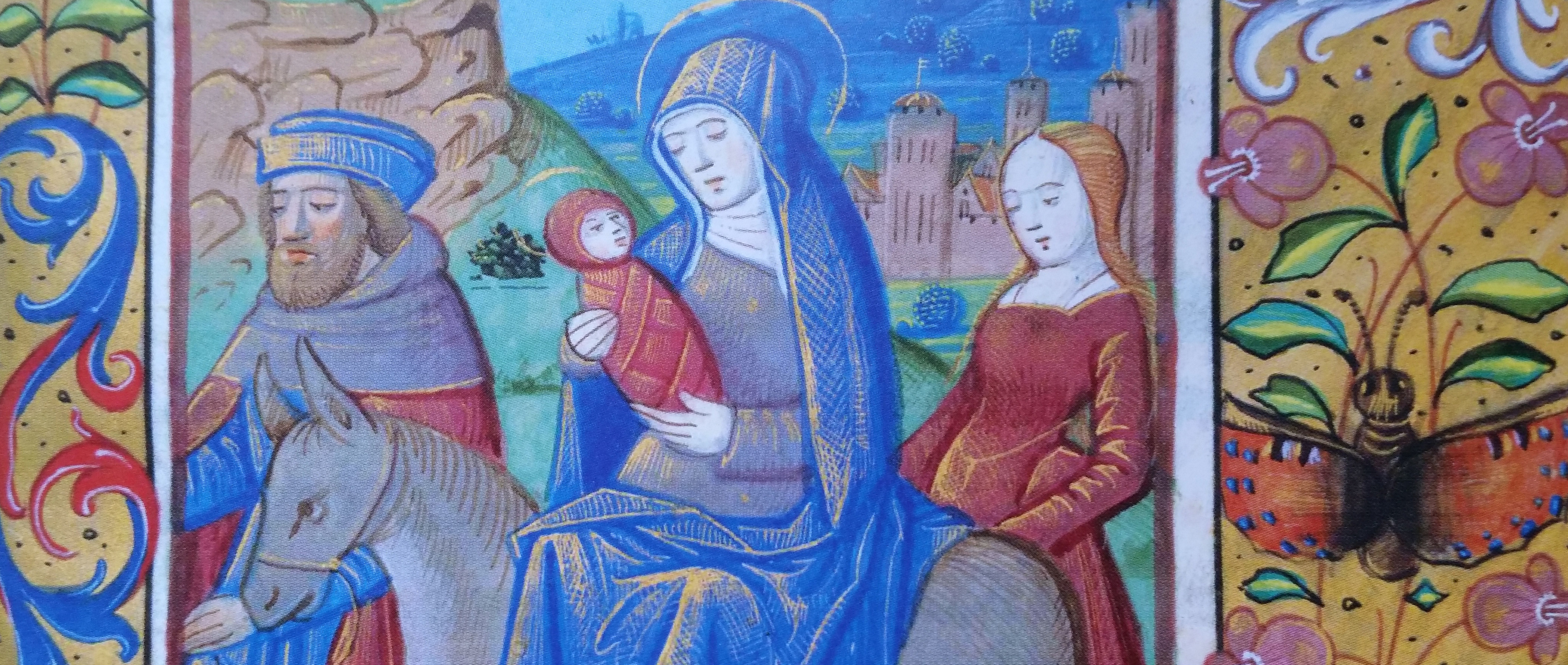Interdisciplinary research is the buzzword of academic research, but it's not every day that a chemical engineering student, an English professor and a chemistry professor find themselves working on the same project.
This one began when Adam Glenn, an Honors College student, took a medieval manuscripts course taught by Scott Gwara, an expert in the history and aesthetics of illuminated parchments.
"I asked the class if anyone might be interested in pursuing a Magellan Scholar grant focused on these manuscripts, and Adam spoke right up," said Gwara, who has mentored several students over the years who have won the undergraduate research awards through the Office of Research.
Glenn, working under the direction of Gwara and analytical chemist Stephen Morgan, is focusing on the chemical components of blue pigments used in late 15th-century manuscripts from France, Germany and Italy. Turns out there is more to these vividly colored illuminations than meets the eye.
So why the interest in this particular blue pigment in the medieval parchments?
Two primary sources of blue pigments were available in the late 15th-century. One of them came from azurite, a common copper ore that has a deep blue color. The other is lapis lazuli, a rare mineral that was mined in Afghanistan. Obviously, the second one was much more costly. Adam expects to determine whether paint recipes for the color blue were consistent in the same period across Europe, and, if not, what reasons might have motivated artists to use expensive or economical materials.
Tell us something about the manuscripts.
One is a common music manuscript from Germany. Another was written and illuminated by a Catholic bishop in Naples, southern Italy. And the third is a "Book of Hours" or prayer book illuminated by Robert Boyvin, whose chief patron was Cardinal Georges D'Amboise, prime minister of France. The prayer book was acquired through the generosity of the B.H. Breslauer Foundation in New York. The other two folios were purchased from a Camden estate in the 1970s. By the 13th century, illuminated manuscripts had become a professional business. Clients would special order a book with instructions as to how many illuminations or paintings they wanted.
How will the student analyze the manuscripts without harming them?
Adam's research will be carried out in Steve Morgan's chemistry lab. Morgan is an internationally recognized analytical chemist who has a number of forensic techniques to examine surfaces without altering them in any way. Two of these noninvasive methods include polarized light and Raman spectroscopy.
Have you ever worked with a student outside of the humanities before on a Magellan Scholar Award?
This is the first time with a student from engineering. It's different for me because I'm typically more interested in the texts and the dialogue between the images and the texts. This is an extraordinary opportunity to work not only with Adam but also with Dr. Morgan who recently attended a conference on historical pigments.
Why do you devote time to mentoring Magellan Scholars?
It's time consuming and labor intensive and incredibly rewarding when you connect these students with their passion for learning. They find definition, something to connect to and that's a powerful thing. I had one student who created a card game based on the theme of Beowulf and another student who found the first attestation of the pronoun "she" in medieval manuscripts.
One of the great secrets of excellence is that the earlier you find your passion, the better you can be. But finding it is the important thing.
And your passion for medieval manuscripts began when?
At 16 I knew I wanted to be a medievalist, and I bought my first manuscript. I've been at USC for 20 years and I love the fact that 200 years from now someone like me will be studying these same pages and some of the documents I've donated to the library's special collections. And they'll be introducing students to the same thrill of discovery.
